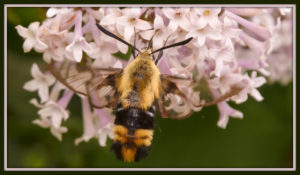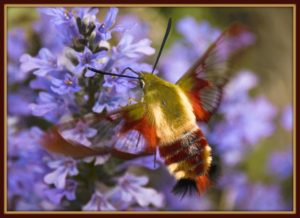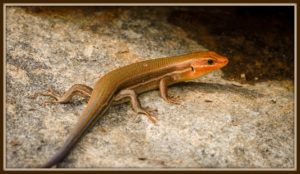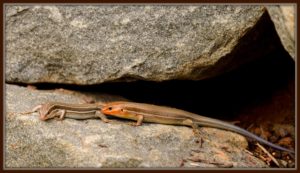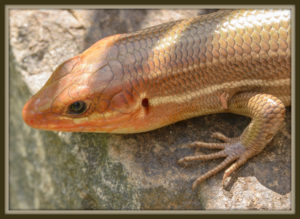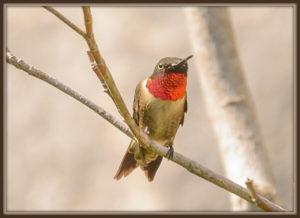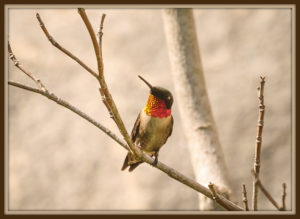May Monday Mixture
Double-click on any image to view it full size. Click the back-button to return to your place on this page.
Greetings!
Last week I shared some pictures from our recent trip to the beach, and this week I offer some from here in Lansdowne Woods taken in the past few days since we got back home. Some of the species shown are old favorites from previous summers, but seeing them again seems very special to me, since there were times over the past winter when it was not clear what the future held in store for me.
Pictures 1 and 2 show our two local clearwing moths.
The two species are visually very similar, and can look more or less like each other depending on ambient lighting conditions etc., but I am reasonably sure that #1 is a Hemaris diffinis (Snowberry Clearwing) and #2 is a Hemaris thysbe (Hummingbird Clearwing). However, the common names vary in different parts of the country, with H. diffinis in particular sometimes being known as the Bumblebee Moth, and H. thysbe sometimes being called the flying lobster (on account of the appearance of its tail). Both species are about an inch long and most often seem darting between flowers and then hovering while they sip nectar (see the long proboscis in each of my photos), so that they can very easily mistaken at a quick glance for large bumblebees, or even hummingbirds.
The next three images (3, 4, & 5) were taken within a few minutes of each other, and show Five-lined Skinks (Plestiodon fasciatus).
The juveniles of the species are easily recognized by their bright blue tails. This coloring is much less pronounced (or absent altogether) in adults. #3 shows an adult male (note the reddish head), and is the largest example of the species I have seen! #4 shows this same large male in company with what I believe is an adult female – this was the first time I have seen two individuals in such close company. #5 is a close-up of the head of the male. If you look very carefully in his eye, you can see the reflection of my white sneakers and blue jeans, and at the very top of his eye my pale colored hat, so I suppose I could enter this picture in a “selfie” contest!
For a change of pace, #6 shows a very attractive small flower I saw for the first time a few days ago. I asked several of our gardeners what it was, and they were all stumped by it. It was growing in an overgrown garden plot, so it was not clear whether it was a wild flower or a deliberately planted item.

After a lot of searching on the web, I have concluded that it is Ornithogalum nutans, commonly known as Nodding (or Drooping) Star-of-Bethlehem. Assuming this is correct, the species was originally native to Turkey and the Balkans. Quoting from http://www.gardenershq.com/Ornithogalum-nutans.php , “Although it is an attractive ornamental plant and has even won the Award of Garden Merit from the Royal Horticultural Society in the United Kingdom, it is considered an invasive species in ten Eastern USA states; and it is especially a pest in the Maryland area where it has out-competed many native forest species.” It is reported that all parts of the plant are toxic to humans!
#7 shows a group of fungi growing on a tree stump. I was attracted to them by the furry appearance. I know very little about fungi, but after some web searching I wonder if this might be Lentinus strigosus. If anyone can confirm (or correct) this, I would be most grateful!
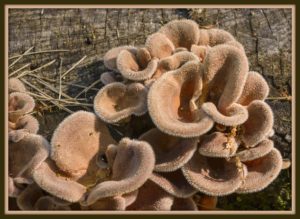
#8 is just a fun picture of a House Sparrow coming out of a bird bath.

The Ruby-throated Hummingbirds (Archilochus colubris) have returned to Virginia after wintering in Mexico or Central America. It is nice to get even a half-way decent picture when they come to a feeder (Image 9), but I get even more pleasure from seeing them (and photographing them) in more natural surroundings, such as when perching in trees between trips to the feeder, and I close this week’s essay with two such images, 10 & 11. In both these images the angle of the sun was just right to show off the ruby coloring on the male’s throat, for which the bird is named.
Have a great week!
